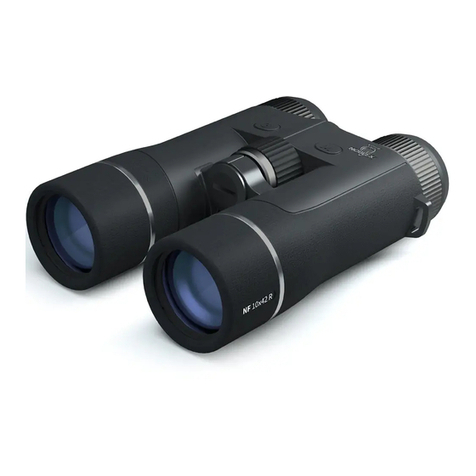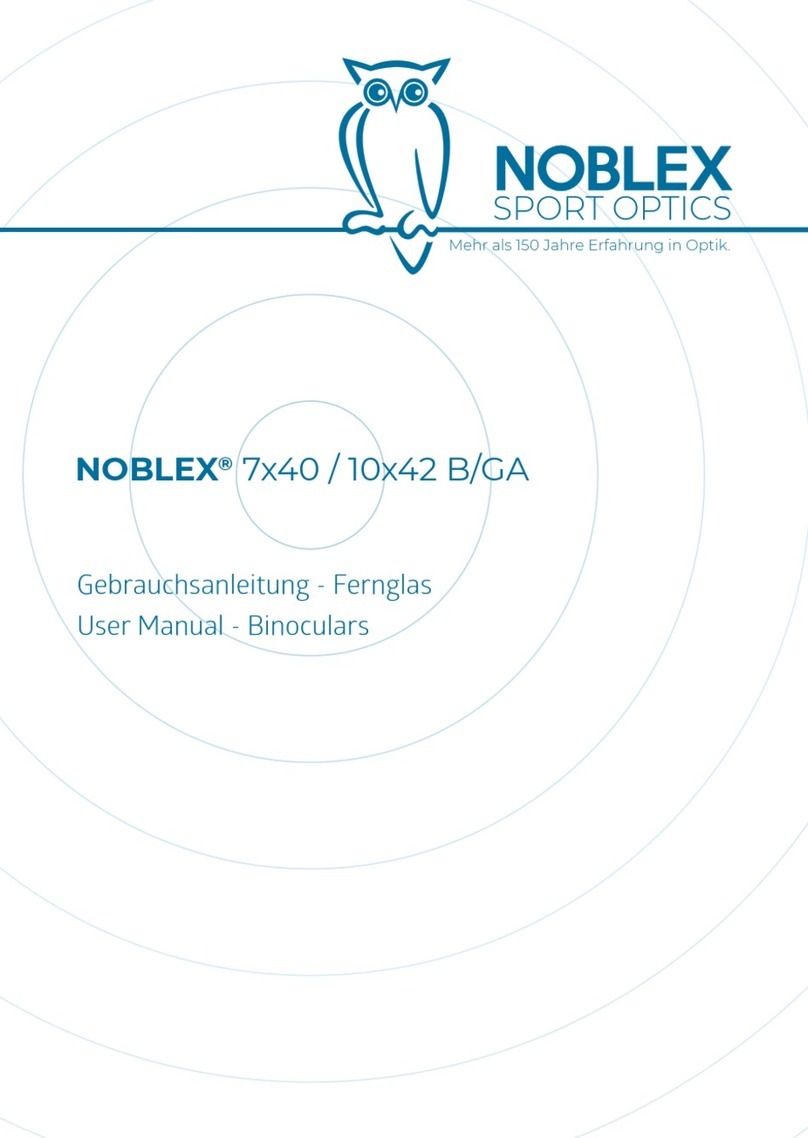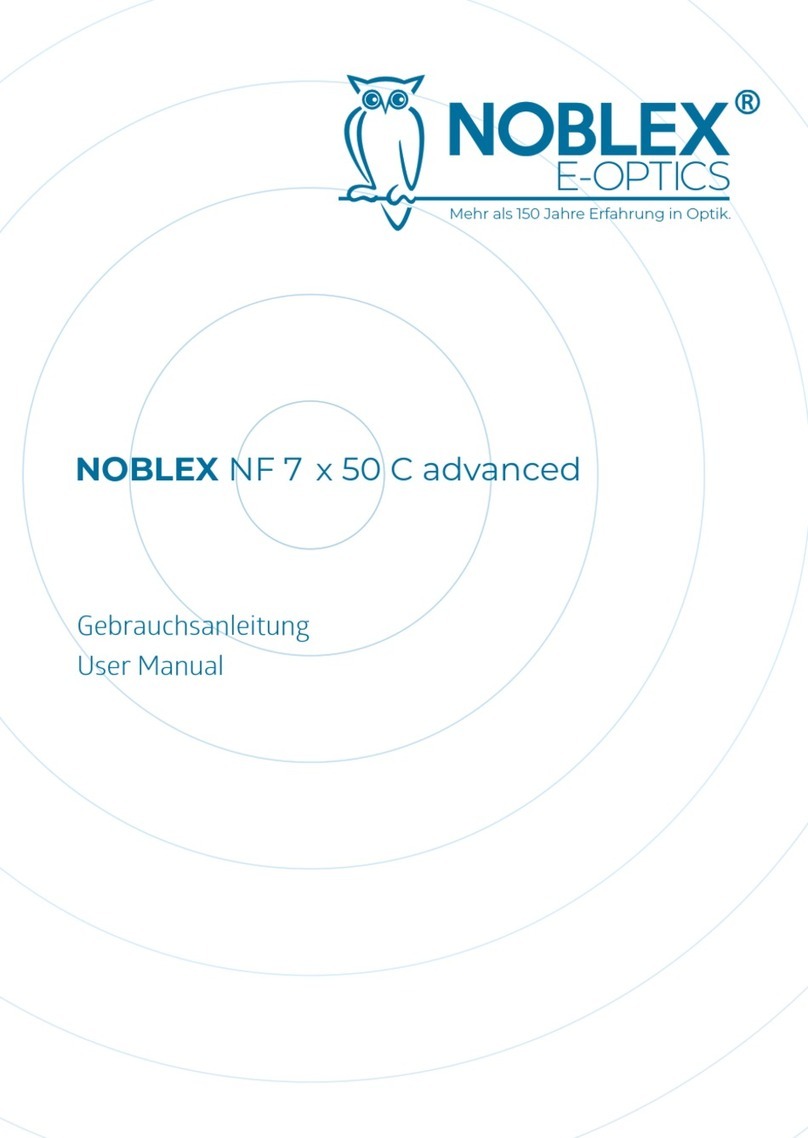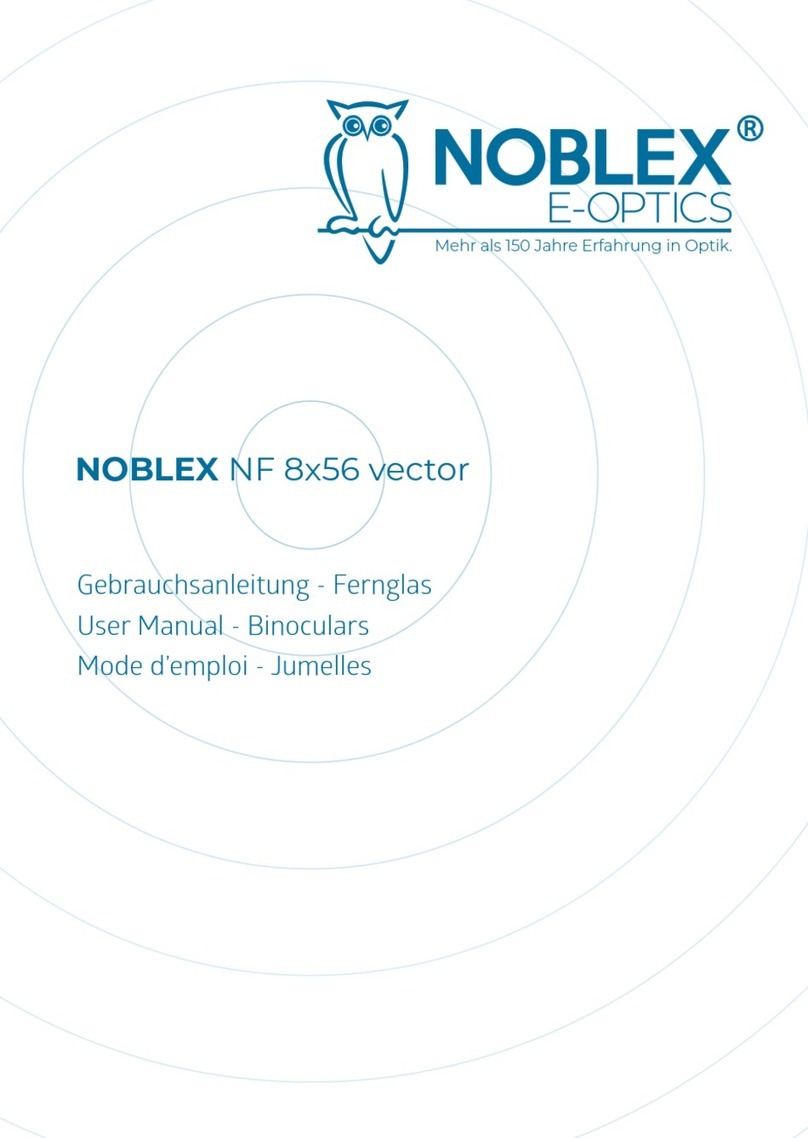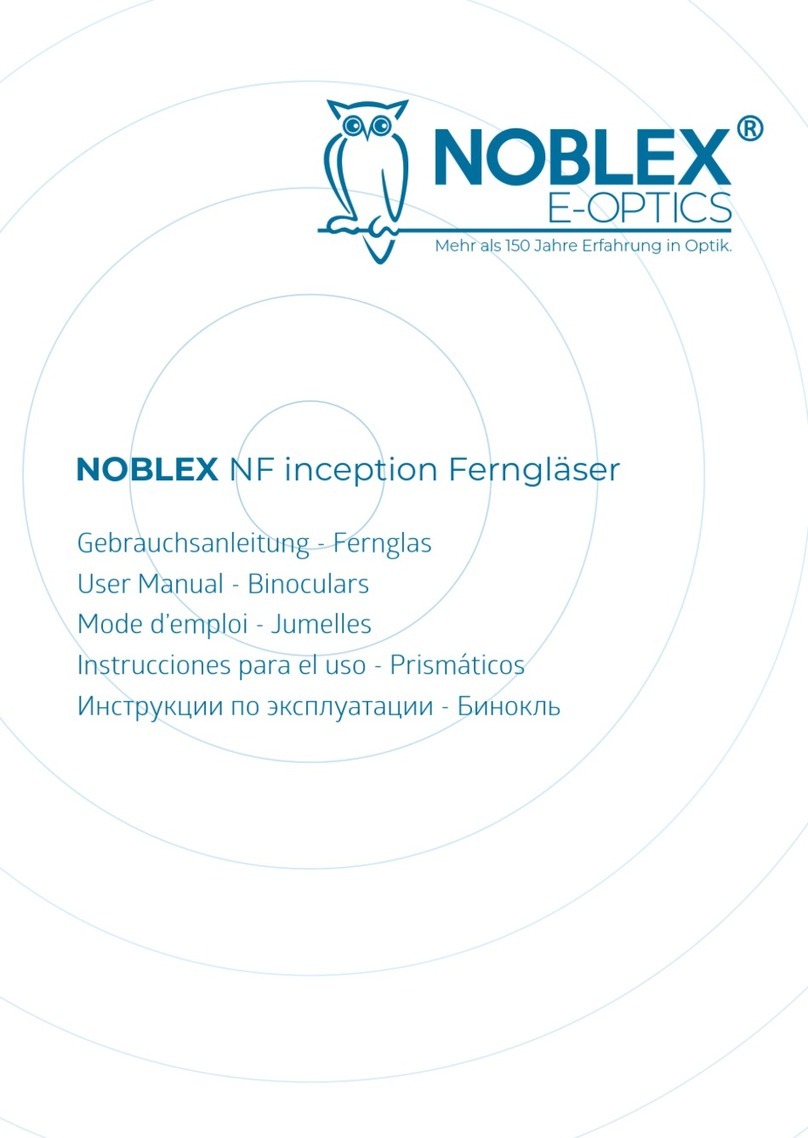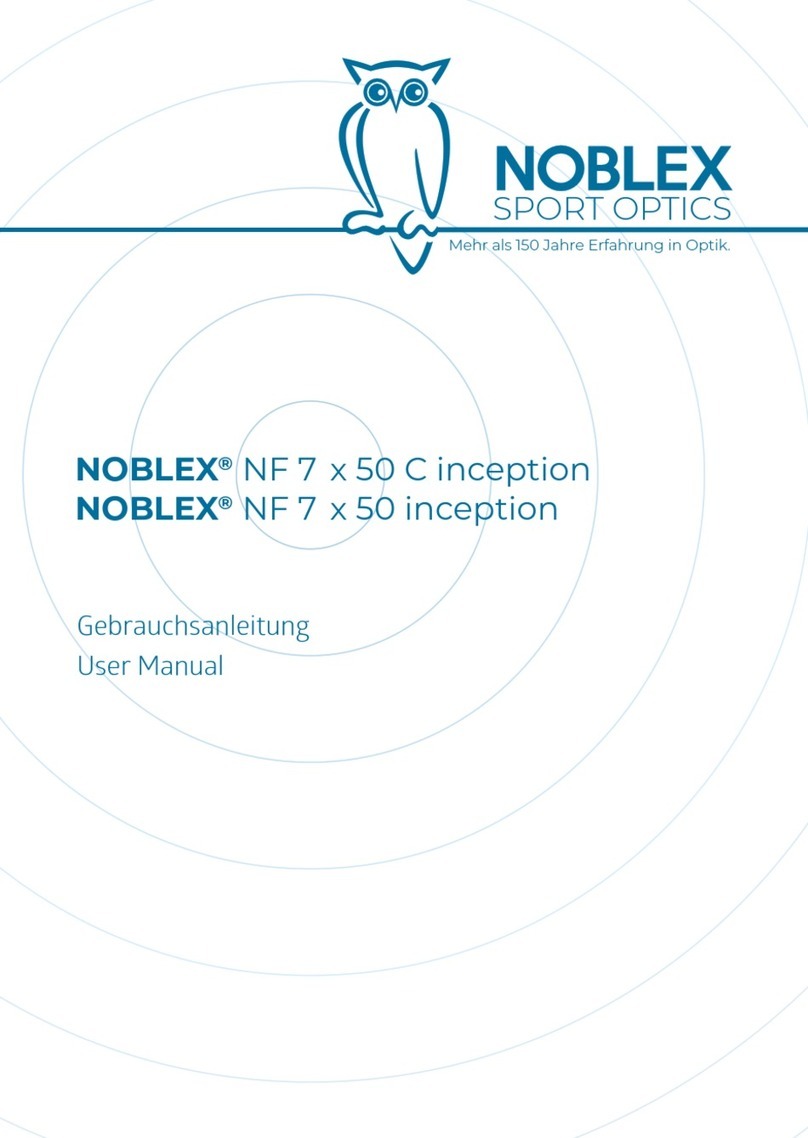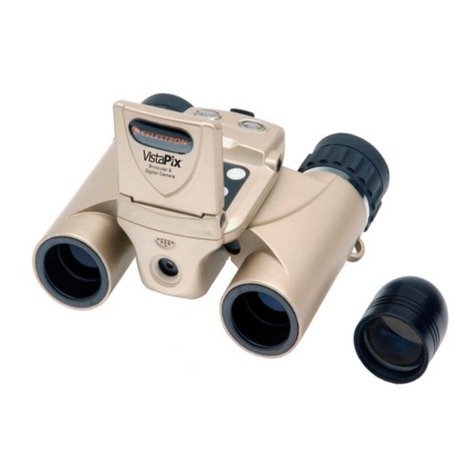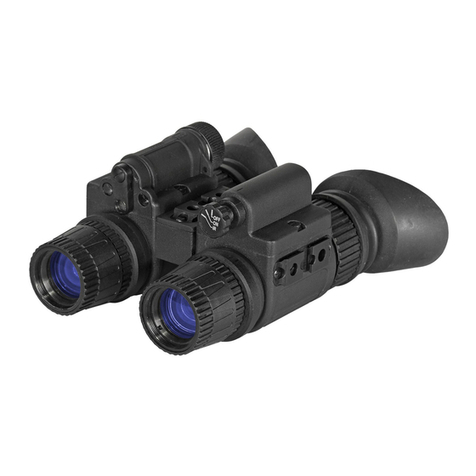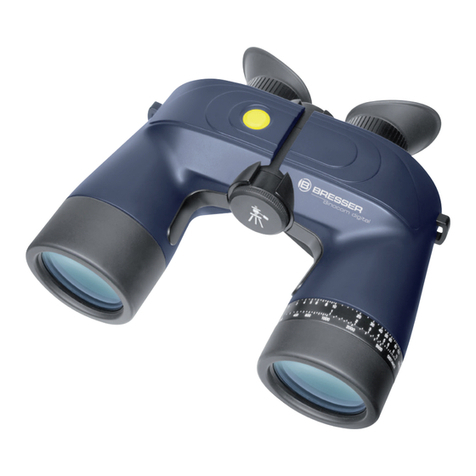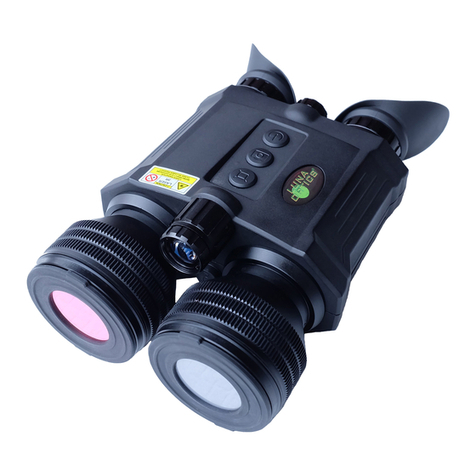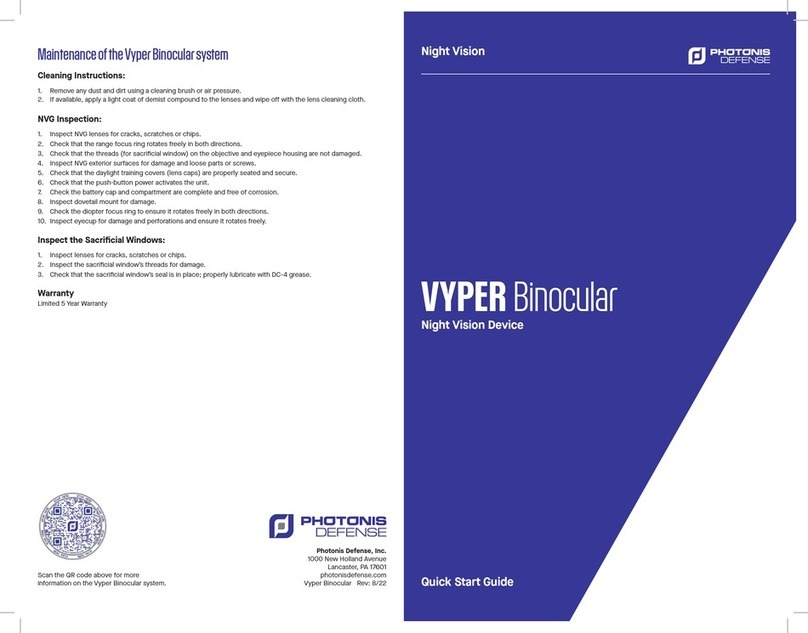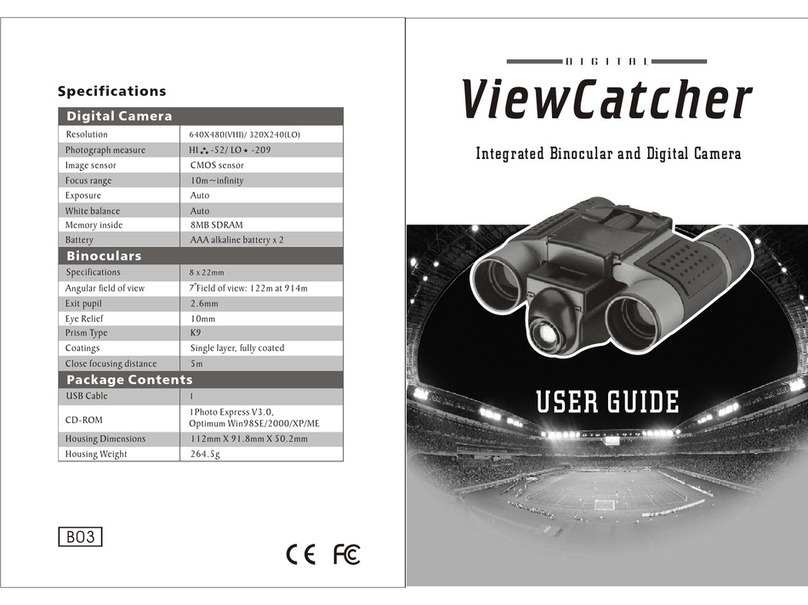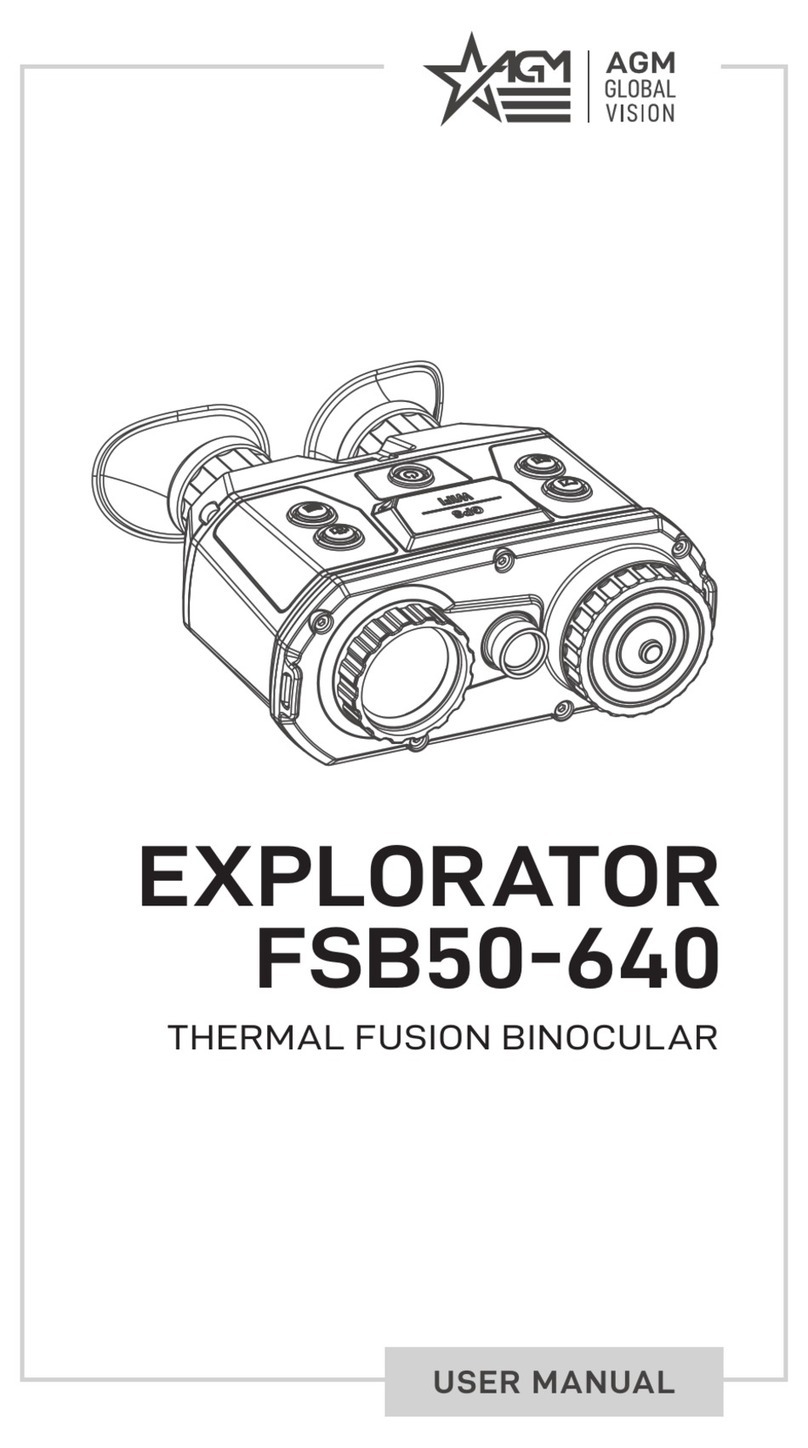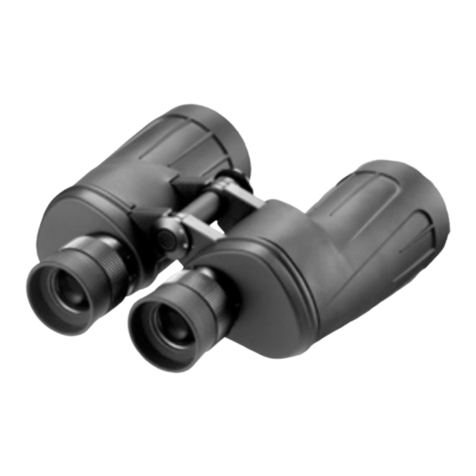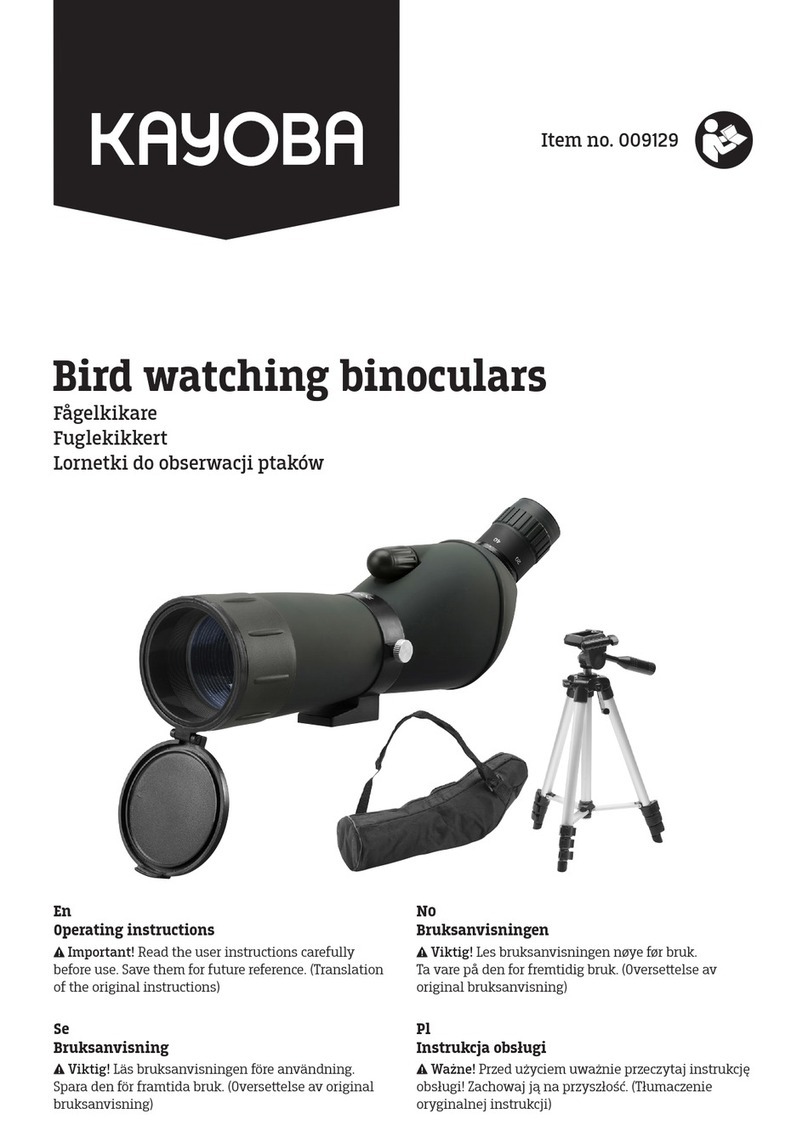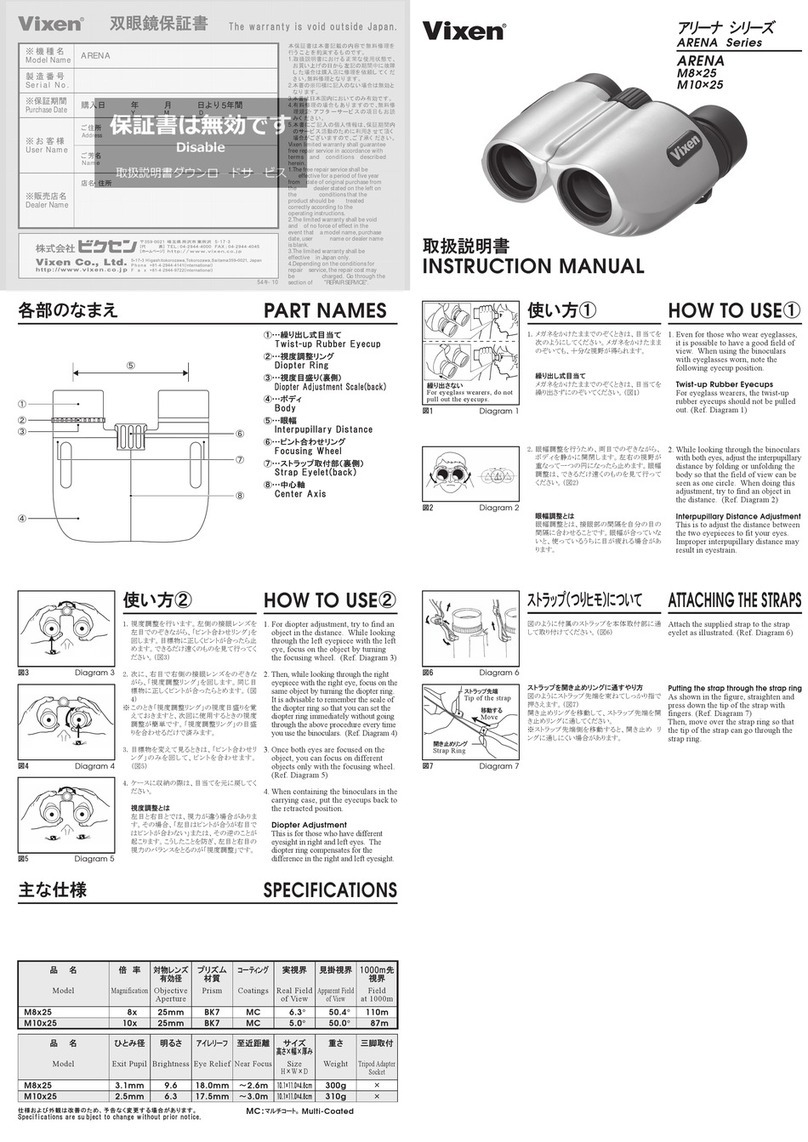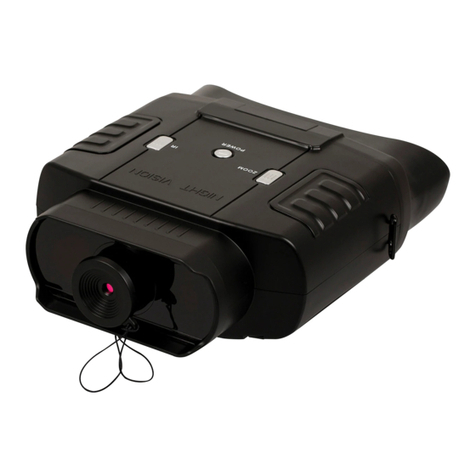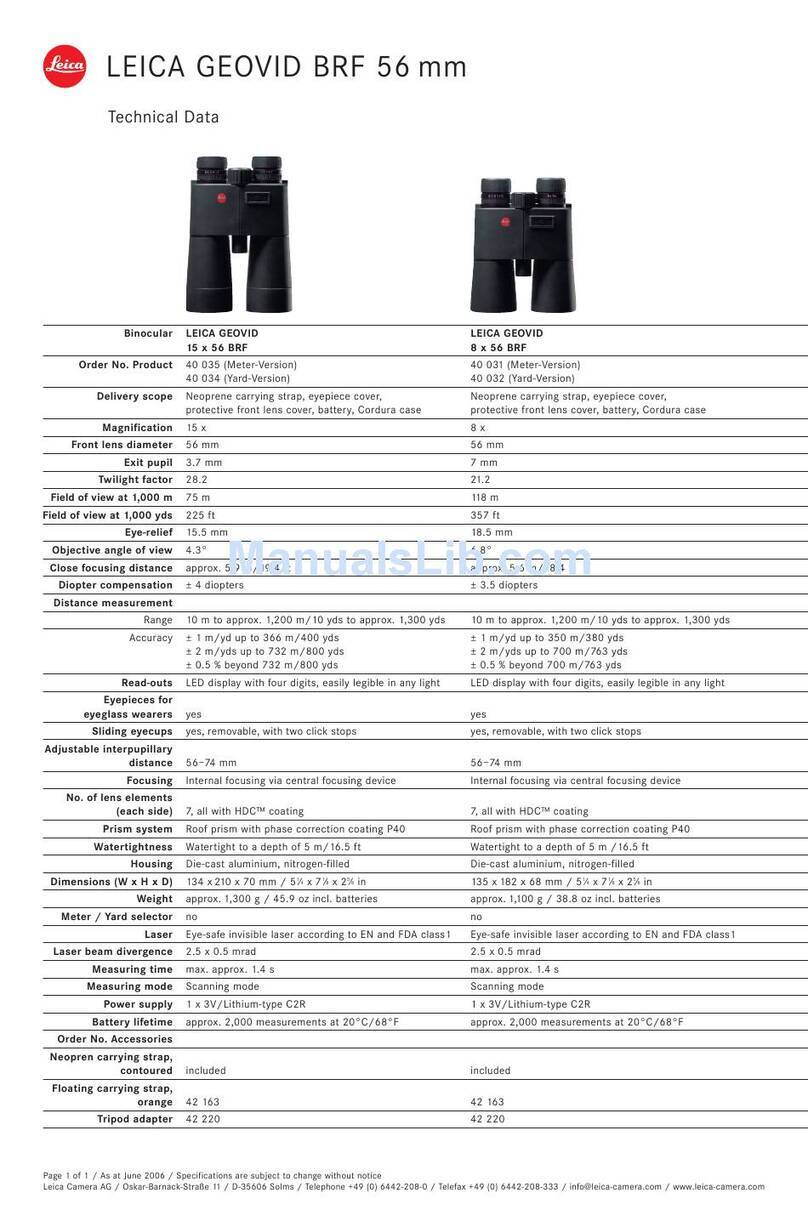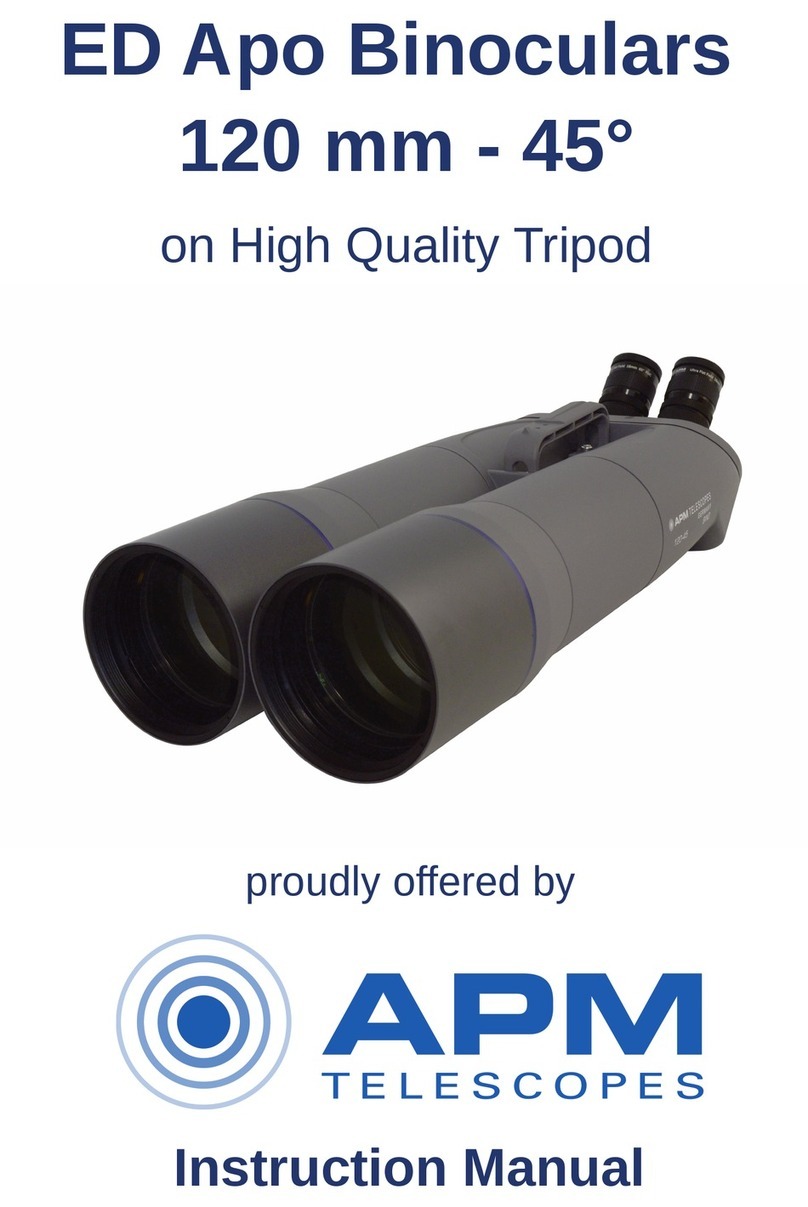
4 5
DEUTSCH
ALLGEMEINE INFORMATIONEN
Das von Ihnen erworbene Spektiv ist ein Spitzenprodukt feinmechanischer
Präzision. Es ist für höchste Ansprüche an die optische Abbildungsleistung
nach neuestem Stand der Optikrechnung und Optiktechnologie gefertigt
und solide in der Verarbeitung. Durch die Verwendung von ED-Optik mit
Breitbandentspiegelung besitzt das Spektiv ein farbreines und kontrastrei-
ches Bild, sowie eine hohe Transmission. Das Gerät ist zudem für Brillenträ-
ger geeignet und wasserdicht.
LIEFERUMFANG
Im Lieferumfang enthalten sind:
• Putztuch
• Garantiekarte
• Schutzüberzug
• Objektiv- und Okularschutzkappe
TECHNISCHE DATEN
Modell 20 – 60 x 80
Vergrößerung 20– 60x
Ø Objektivöffnung [mm] 80
Sehfeld [m auf 100 m] 38 – 17
Nahdistanz [m] 6,5
Ø Austrittspupille [mm] 4,0– 1,3
Austrittspupillenlängsabstand [mm] 19,5
Dämmerungsleistung 69,3 – 40,0
Brennweite [mm] 402
Max. Länge [mm] 440
Max. Breite [mm] 98
Max. Höhe [mm] 171
Masse [g] 1420
Dichtigkeit Wasserdicht 1m, 30 Min.
INBETRIEBNAHME
Entfernungseinstellung und Augenfehlerausgleich
Um ein Objekt in unterschiedlichen Entfernungen gleichermaßen klar und
kontrastreich beobachten zu können, ist es erforderlich, das Spektiv auf die
entsprechende Entfernung einzustellen.
Während der Beobachtung des Objektes wird mit Hilfe der beiden
Fokusräder (1) so lange nach rechts oder links gedreht, bis die klarste und
kontrastreichste Beobachtung erreicht ist. Das hintere Rad (1a) dient zur
Schnellfokussierung, das vordere (1b) zur Feinjustierung der Schärfe. Für
ein optimales Ergebnis sollte mit der Grobfokussierung immer etwas über
den schärfsten Punkt hinaus fokussiert werden. Im Anschluss kann mit Hilfe
des Rades für die Feinjustierung (1b) ein präzises Scharfstellen auf kleinste
Details erfolgen.
Anpassung der Augenmuschel
Bei den Modellen handelt es sich um Brillenträgermodelle. Der normal-
sichtige Beobachter dreht die Augenmuschel (2) bis zum Anschlag heraus.
Brillenträger verwenden das Spektiv mit hineingedrehter Augenmuschel,
um das volle Sehfeld zu nutzen.
Vergrößerungswechsel
Je nach Objektentfernung und Lichtverhältnissen lässt sich die geeignete
Vergrößerung durch Drehen des Vergrößerungsrings (3) um bis zu 60°
mühelos einstellen. Für eine bessere Orientierung sind die wichtigsten
Vergrößerungswerte auf dem Rohr graviert, wobei auch jede beliebige
Zwischenvergrößerung bei gleichbleibender Bildqualität und Sehschärfe
stufenlos einstellbar ist.
Stativanbindung
Das Gerät kann mit Hilfe des vorhandenen Anschlussgewindes ¼“ (4) auf
einem handelsüblichen Stativ montiert werden.
Sonnenblende
Ihr Spektiv verfügt über eine verschiebbare, ausziehbare Sonnenblende (5).
Normalerweise bleibt die Blende eingefahren, aber in Situationen, in denen
Blendung ein Problem darstellt, kann diese ausgefahren werden. Dies ist
nützlich, um zu verhindern, dass unerwünschtes Sonnenlicht die Objektivlin-
se erreicht und die Bildqualität beeinflusst.


